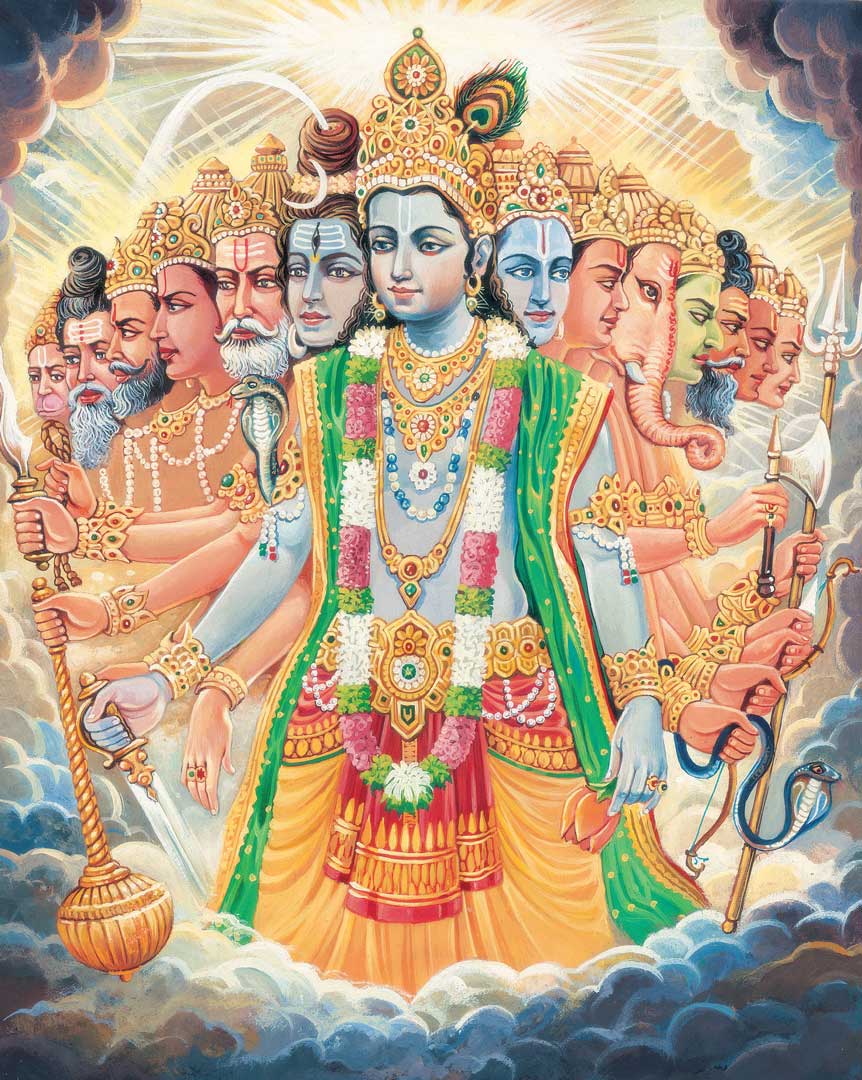

अनेकवक्त्रनयनमनेकाद्भुतदर्शनम् |
अनेकदिव्याभरणं दिव्यानेकोद्यतायुधम् || 10||
दिव्यमाल्याम्बरधरं दिव्यगन्धानुलेपनम् |
सर्वाश्चर्यमयं देवमनन्तं विश्वतोमुखम् || 11||
aneka-vaktra-nayanam anekādbhuta-darśhanam
aneka-divyābharaṇaṁ divyānekodyatāyudham
divya-mālyāmbara-dharaṁ divya-gandhānulepanam
sarvāśhcharya-mayaṁ devam anantaṁ viśhvato-mukham
aneka-vaktra-nayanam anekadbhuta-darshanam
aneka-divyabharanam divyanekodyatayudham
divya-malyambara-dharam divya-gandhanulepanam
sarvashcharya-mayam devam anantam vishvato-mukham
BG 11.10-11: In that cosmic form, Arjun saw unlimited faces and eyes, decorated with many celestial ornaments and wielding many kinds of divine weapons. He wore many garlands on His body and was anointed with many sweet-smelling heavenly fragrances. He revealed Himself as the wonderful and infinite Lord whose face is everywhere.

Start your day with a nugget of timeless inspiring wisdom from the Holy Bhagavad Gita delivered straight to your email!
Sanjay elaborates upon Shree Krishna’s divine universal form with the words aneka (many) and anant (unlimited). The entire creation is the body of God’s cosmic form, and therefore it contains countless faces, eyes, mouths, shapes, colors, and forms. The human intellect is habituated to grasping things within the limited kernel of time, space, and form. The cosmic form of God revealed unusual wonders, marvels, and miracles in all directions, transcending the limitations of space and time, and thus it could be aptly termed as wondrous.